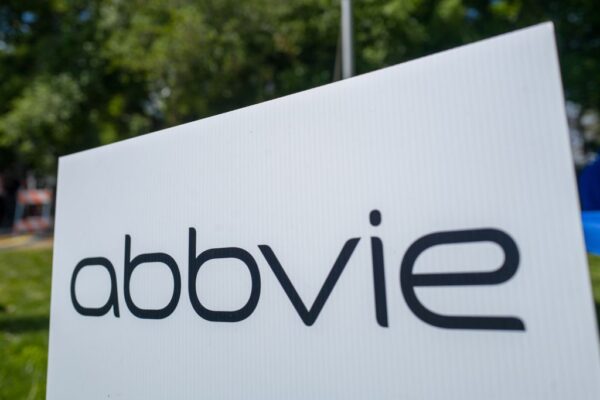
AbbVie is joining the chase for new obesity drugs, but rather than getting a me-too GLP-1 drug, the pharmaceutical giant is landing rights to a clinical-stage molecule that goes after two novel targets to trigger weight loss.
Under deal terms announced Monday, AbbVie will pay Danish company Gubra $350 million up front for rights to its drug, GUB014295. AbbVie will lead further clinical development as well as commercialization. Gubra could receive up to $1.875 million in milestone payments, plus royalties from sales of an approved product.
AbbVie’s Allergan Aesthetics division has a presence in targeted fat reduction with CoolSculpting, a nonsurgical medical device. The company does not market this offering as a treatment for weight loss or obesity. GUB014295 gives AbbVie entry into a growing field of obesity drug contenders.
Gubra’s drug is a peptide engineered to be an analog for amylin, a hormone that helps regulate blood sugar and food intake. It is specifically designed to bind to and activate amylin and calcitonin receptors, both of which play roles in regulating aspects of metabolism, such as appetite. The once-weekly injectable drug, also known internally as GUBamy, is intended to spark signals to the brain that suppress appetite to reduce food intake. This approach also activates an inhibitory signal that delays gastric emptying to help patients feel fuller.
Last November, Gubra announced encouraging preliminary Phase 1 data showing a single dose of GUB014925 led to 3% weight loss that was sustained for the six weeks of the trial. The placebo group showed 1% weight gain. The company added that the study drug was well tolerated and side effects were gastrointestinal, which is consistent with other obesity drugs. These adverse events were classified as mild and transient. More specifically, nausea and reduced appetite were described as frequent while vomiting was occasional. Better safety and tolerability could offer a way for AbbVie to stand apart in a crowded field of obesity drug candidates.
“Obesity represents a significant global health concern with nearly 900 million adults with obesity, many of whom struggle to stay on current treatment options,” Roopal Thakkar, executive vice president, research & development, chief scientific officer, AbbVie, said in a prepared statement. “Building on Gubra’s experience in the discovery of novel peptide-based therapeutics, we look forward to advancing the development of the GUB014295 program.”
A multiple-ascending dose test of GUB014925 is designed with two parts. Part A is testing two doses for six-weeks; Gubra has said preliminary data are expected in April. Part B is testing three more doses for 12 weeks. Dosing in this part is expected to be complete in the fourth quarter of this year.
In a note sent to investors, analysts at William Blair said they believe AbbVie’s licensing deal for the Gubra drug highlights growing interest in amylin agonists, particularly those drugs that take a dual approach by activating both amylin and calcitonin receptors. This approach offer a way for companies to break into the obesity field despite being behind the two blockbuster GLP-1 drugs, Wegovy from Novo Nordisk and Zepbound from Eli Lilly. The William Blair analysts added that a key question is whether AbbVie plans to develop GUB014295 as a monotherapy, which could be better tolerated, or as part of a combination with GLP-1/GIP agonist drugs to potentially drive greater weight loss.
Novo Nordisk’s efforts to expand its leadership position in obesity products includes drugs that go after two targets to spark weight loss. The pharma giant’s amycretin is a peptide engineered to activate GLP-1 and amylin receptors. In preliminary Phase 1b/2a results released in January, the highest dose of the once-weekly injection led to 22% weight loss measured at 36 weeks.
Last month, Metsera raised $275 million from its IPO to support development of its most advanced program, a longer-acting GLP-1 agonist in Phase 1/2 testing. The biotech’s pipeline also includes an ultra-long acting amylin receptor agonist. Zealand Pharma has reached mid-stage clinical development with petrelintide, a long-acting amylin analog that could offer weight loss comparable to GLP-1 drugs. But Zealand also says this drug could offer better tolerability and muscle preservation, addressing the muscle loss that is another known adverse effect of currently available obesity medications. Meanwhile, the pipeline of Viking Therapeutics includes a preclinical obesity program targeting the amylin and calcitonin receptors.
Photo: Smith Collection/Gado, via Getty Images










